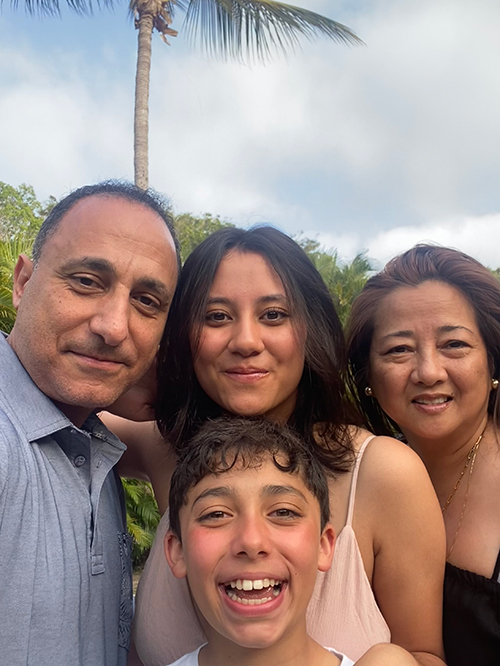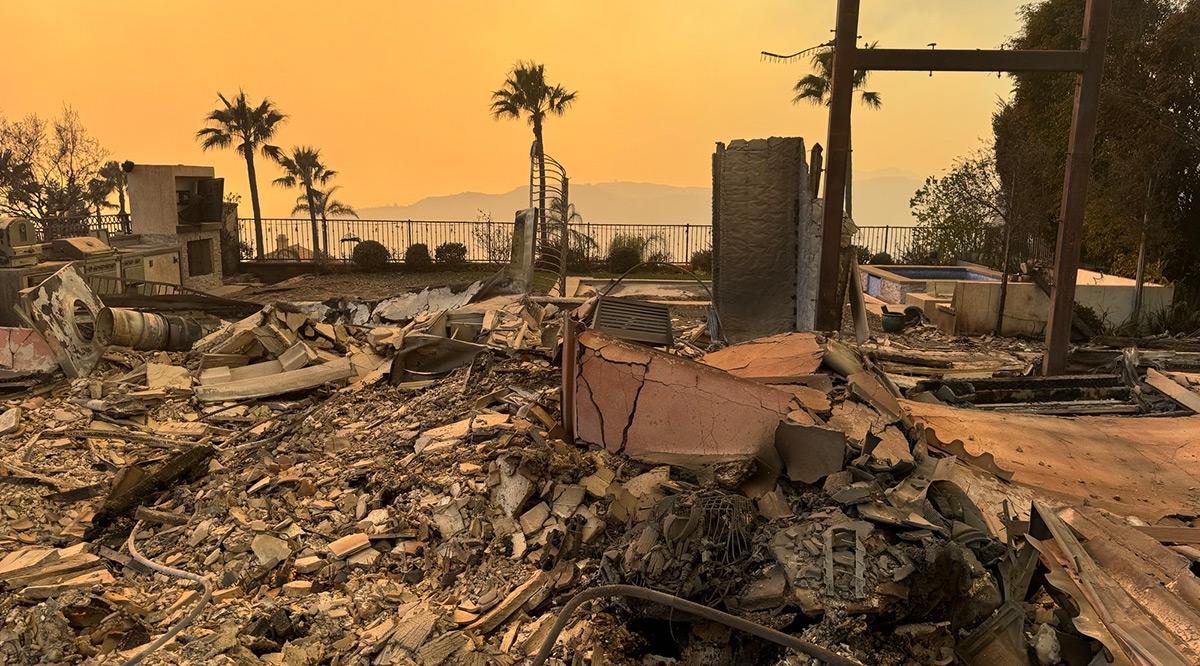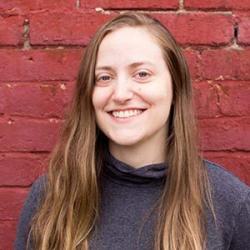Ashraf Elsayegh, MD, a pulmonologist at two medical centers in the Los Angeles area, generally leaves for work early in the morning. But, fatefully, on the morning of Tuesday, Jan. 7, 2025, he happened to be home with his wife and 12-year-old son.
Already in his scrubs to go in to work later, Elsayegh had just gotten back, with a grocery haul for breakfast, to his home in the Pacific Palisades neighborhood when his son said he smelled smoke. They looked out the window and saw a haze of black billowing from a house just two lots away.
He immediately gathered his son and wife into the car [his 18-year-old daughter was at school], not taking time to pack anything. As they were attempting to flee, they got stuck, with fire burning the trees on either side of the road. Spotting his scrubs through his car window, neighbors approached him asking for help. How would they get out of there? How would this affect their asthma? Their heart disease? Moved by their desperation, Elsayegh started handing out his cell phone number.
Fortunately, Elsayegh, his family, and his neighbors were able to flee to safety after firefighters bulldozed an escape path. Elsayegh and his family would later discover that their home, and everything in it, had been destroyed — along with nearly every structure in the entire neighborhood and surrounding community. The Palisades Fire is now considered one of the most destructive wildfires in California history.
In the 24 hours after the start of the fire, Elsayegh’s cell phone lit up with a constant barrage of calls and text messages from fire victims. It was more than he could handle on his own. He thought back to his residency in New York City, where he’d worked at a clinic formed to help survivors in the aftermath of the September 11 terrorist attacks. So, when administrators at Saint John’s Medical Center in Santa Monica, where he is pulmonary director, asked him how they could help, he proposed starting a clinic for the fire victims.
“I thought, ‘Why not do it for this?’” he says. “And to the credit of the health system administration, within 10 days we had a clinic up and running.”
In the months since the fire, Elsayegh has continued his full-time medical practice at Saint John’s Medical Center and Cedars-Sinai Medical Center, while helping with community rebuilding efforts, overseeing the rebuilding of his own home, and seeing patients in the fire disaster relief clinic with a variety of ailments exacerbated by exposure to smoke and toxins.
It’s an experience he fears many more doctors will face as natural disasters, fueled by climate change, affect more and more communities and their health.
Elsayegh will share more about his experience at Learn Serve Lead 2025: The AAMC Annual Meeting, taking place in San Antonio, Texas, Nov. 1-5.
AAMCNews spoke with Elsayegh about his experiences and how they have shaped his views on the role of health care workers during and after natural disasters.

Ashraf Elsayegh, MD, poses with his wife, his 18-year-old daughter, and his 12-year-old son.
Courtesy of Ashraf Elsayegh, MD
What kind of lessons or realizations did you glean from having this firsthand experience of being in the fires and treating survivors in the aftermath?
This was the largest urban fire in modern history. So, this was unprecedented and different from anything anyone’s ever experienced. [According to official reports, the fire burned over 23,000 acres, destroyed nearly 7,000 structures, and resulted in 12 deaths over 24 days before it was contained.] The sheer number of victims is massive and spanned all ages. That, in itself, was very unique and humbling, to try and help as many people [as possible] being, not only a physician but someone who was living there and losing their home as well. It gave me a different perspective on this. And what I mean by that is it’s very easy for someone who hasn’t had that experience to tell someone it’s not safe to go back and victims should move away from the fire zone. But being an actual victim and knowing that I can’t just pick up my family and leave my job and move because the doctor told me to, it gave me a different perspective on how to answer some of the questions that I had to answer for these patients. So, I had to figure out how to have all of us return safely.
Now, as a physician, you deal with a lot of different diseases and problems that may have been exacerbated by these fires, but it’s different when you actually live it. You see not one, not 10, but hundreds of patients come in with exacerbations of diseases that are much more severe and much more significant due to the toxin and smoke exposure. Everyone talks about climate change and how it’s affecting us, and I can’t rightly say that this was 100% climate change’s fault. There were many reasons for this fire. But does climate change play a role? Absolutely. Climate change is playing a role in a lot of the natural disasters that are occurring throughout the world. I think the severity and how quickly this fire demolished an entire [community] — of course, climate change plays a role in all that.
You’ve talked about how climate change used to seem like some future problem. Now you see the real-time impacts of it. What do you think academic health systems and the people training future doctors can take away from these experiences?
When I was in medical school, HIV was relatively new. As I was going through medical school and training and residency and so on, things changed tremendously due to HIV. Infection protocols, like wearing gloves when examining patients, all of these things were new that were taught due to this disease. It was a global disaster, and academics and the teaching of doctors had to evolve as this disease evolved as well. Now HIV is just one of millions of other diseases, but back then, it pretty much overtook everything in medicine.
Well, I think climate change and environmental disasters are similar now. We have to train our physicians to be prepared for these environmental and natural disasters, which, in my opinion, will occur more and more. I think the best thing we’re going to do for our doctors is to continue to teach them everything there is to know about medicine, but we also have to evolve our teaching to start talking about issues like natural disasters. Right now we’re learning as we go.
What is your message for the academic medicine community?
This is not a subspecialty problem. And what I mean by that is, yes, toxin exposure, smoke exposure, dust exposure, really 90% of it involves the lungs, hence why a pulmonologist is dealing with this. But what I realized as things evolved was that, even if I help someone’s breathing, even if I help someone’s asthma, or give them peace of mind that they’re going to be OK, it’s a lot more than that. These are people who are coming to you while losing everything. They’re at the bottom of their life right now, and there’s a huge psychological part. As these natural disasters occur more and more, and as you are the physicians that will be dealing with them, or the administration of hospitals that will be in your community dealing with them, do not ever forget about the psychiatric portion of this: the depression, the PTSD, the kids that don’t know how to express their grief. When natural disasters occur, whether you’re the physician, the nurse, the student, or the administration, be prepared to treat these patients in a holistic way, including the psyche, the emotional part, the psychiatric part of all of this.
There’s been a lot of emphasis on physician wellness since the pandemic. For yourself, having experienced this disaster firsthand and then also being a person so many victims lean on for help, how do you cope with the stressors you’re facing?
Honestly, it’s not easy. Right after the fire, I was mostly running on adrenaline. I wanted to do what I could to help as many people as I could. Then I had to go home and deal with my kids and see how hurt they were and how upsetting this was for them. And I’d think about how all these other people who also lost their homes had kids. Everyone was experiencing what I was experiencing. It is exhausting, and sometimes I just need to close my mind and not have to think about anything. But unfortunately, I can’t, really. Even though everything is much better now and we’re in the cleanup phase, which has its own set of problems, at least the city is starting to look nicer.
Now I’m dealing with rebuilding. I’ve got a full-time job. I’ve got to deal with my family. I’ve got to run this new clinic that I started for the fire victims and, at the same time, have meetings with my contractor every day and am dealing with permits and dealing with the city. [Elsayegh and his family are living in a rental home as their house is rebuilt, a process that could take two years.]
It does become overwhelming, and I wish I had an answer on how I do it right now. I’m just doing it, and we’ll see what happens. But you know, at least at the end of the day, the work that I do is gratifying to me, and that makes me able to wake up and do it again every day.

